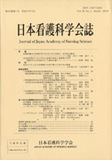Japanese
English
- 販売していません
- Abstract 文献概要
- 参考文献 Reference
- サイト内被引用 Cited by
要旨
本研究は,未告知状況下におけるがん患者の家族と看護者のありのままの世界を理解し,未告知状況下の患者・家族への看護の手がかりを見つけることを目的に,現象学的方法論による面接を行った.研究参加者は未告知がん患者の家族(配偶者)8名と,その受け持ち看護者8名である.
現象学的方法論を用いた面接を行った結果,以下のことが明らかになった.
1.未告知状況下におけるがん患者の家族の世界は,告知後患者が悪い結果になるに違いないという〈思いこみ(決めつけ)〉から,告知後の結果への〈恐れ〉,告知後のかかわりへの自信のなさ〉の中でつらく,苦しみ,不自由な状況がみられた.
2.未告知状況下のがん患者の受け持ち看護者の世界は,家族と同様〈思い込み〉〈恐れ〉〈自信のなさ〉の要因の他に,〈無関心〉〈多忙〉の要因のなかで,つらく不自由な状況が見られた.
3.参加者は面接の初めの頃,1.2.のような状況であった.しかし,現象学的方法論を用いた面接をすすめるにしたがって,参加者は「~したい」気持ちと「~してはいけない」気持ちの中でつらく不自由な自分の姿に気づき始め,自分の本来のあるがままの気持ちに素直に動き始める世界が見られた.
Abstract
The purpose of this study was to clarify the situation of the family members and nurses of cancer patients who were uninformed of the disease and to obtain insights into theses patients and their families. The subjects were 8 members of the families(spouses)of uninformed cancer patients and 8 nurses who were in charge of the patients.
The interview revealed:
1. The family member of the patients were troubled and constrained by the “obsession” that the state of the patients would become worse after telling them the truth, and their own “fear”, and “uncertainty” about how to deal with the patients after disclosure.
2. In the nurses of the patients were also troubled and constrained. They exhibited “indifference” and “were busy” as well as “obsession”, “fear”, and “uncertainty” as observed in the family members.
3. In the early phase of the interview, the subjects were in the situation described in 1. and 2. However, with advancement of the intensive interview by a phenomenological approach, the subjects become aware of their present state that they are troubled and constrained between two feelings, i.e., “I want to do ~” and “I should not do ~” and began to act as they feel, following their original feelings.
Copyright © 2000, Japan Academy of Nursing Science. All rights reserved.


